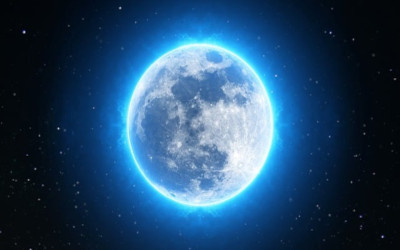The moon is Earth’s closest celestial neighbour. If you look into the night sky, then the moon is the brightest and closest object. The moon makes Earth a livable planet because it is affecting the Earth’s wobble on its axis, and therefore the climate is rather stable. The moon also causes tides, which have affected humans for thousands of years.
The moon travels around the Earth once every 27.322 days in an elliptical orbit. The moon is fixed to Earth’s tides, which means that it rotates on its axis only once every rotation of our planet. That is also a reason why we see only one side of the moon. It is also called synchronous rotation.
In our solar system, the sun is the only object that shines with its own light. So when we see the moonlight, it is actually the reflection off the surface of the moon. The moon has different phases. The first phase is the new moon. This is the phase when we can’t see the moon. In this part, the moon rises and sets together with the Sun. The next phase is called Waxing Crescent. This silvery fragment of the moon appears when the illuminated half of the moon faces mostly away from Earth. It gets bigger every day. The next phase is called the first quarter. In this phase, the moon is a quarter through its monthly journey. We also call it the half-moon, but we actually see only half of the illuminated half. The next phase is called the Waxing Gibbous. In this phase, most of the moon’s dayside has come into sight. It also looks brighter in the sky. The next phase is called the Full Moon. In this phase, the moon is opposite the sun, and this reveals itself as the moon’s dayside. Technically, we now see half of the moon. After this, the moon is getting closer to the Sun again. Now the opposite side of the moon reflects the moon’s light. These phases are called Waning Gibbous, Last Quarter, and Waning Crescent.
The period from one full moon to another is approximately 29.5 days. So sometimes it might happen that we see two full moons in one month. The second full moon in the month is called the blue moon. A blue moon can never occur in February because it only has 28 days, or in the leap year, 29 days. Two full moons have a bigger change to appear on months when there are 31 days. The first of the full moons is always either on the first or second day of the month. The blue moon can be seen once every 33 months and 41 times per century.
The moon itself is never blue. However, sometimes you can see greenish- and bluish-tinted moons. It might happen just before the sunrise or after the sunset. It happens because of the small particles that are found in the atmosphere. As early as the 16th century, the phrase “the moon is blue” meant something that was not possible.
The understanding that the moon is blue sounded absurd, and from there also came the first meaning for the saying, which is ‘never’. It is also thought that the meaning of the blue moon was when it actually appeared blue in the sky. It happened in 1883, when the Indonesian volcano Krakatoa exploded. The dust turned the sunset green, and the moon seemed blue. It has also happened in 1927, when there was a lot of dust in the sky because of the dry season, and also in 1951 in North America because of the forest fires.
It was therefore clear by the mid-19th century that it was obvious that a visibly blue moon, while rare, still happened from time to time, giving rise to the expression “once in a blue moon.” This meant, then, exactly what it means now: a relatively infrequent event that is not regular enough to be precisely defined. In some songs, the meaning of the blue moon is also translated as sadness and loneliness.

Sources:
https://science.nasa.gov/moon/
https://science.nasa.gov/moon/moon-phases/
https://www.britannica.com/science/blue-moon-astronomy
https://skyandtelescope.org/observing/once-in-a-blue-moon/
